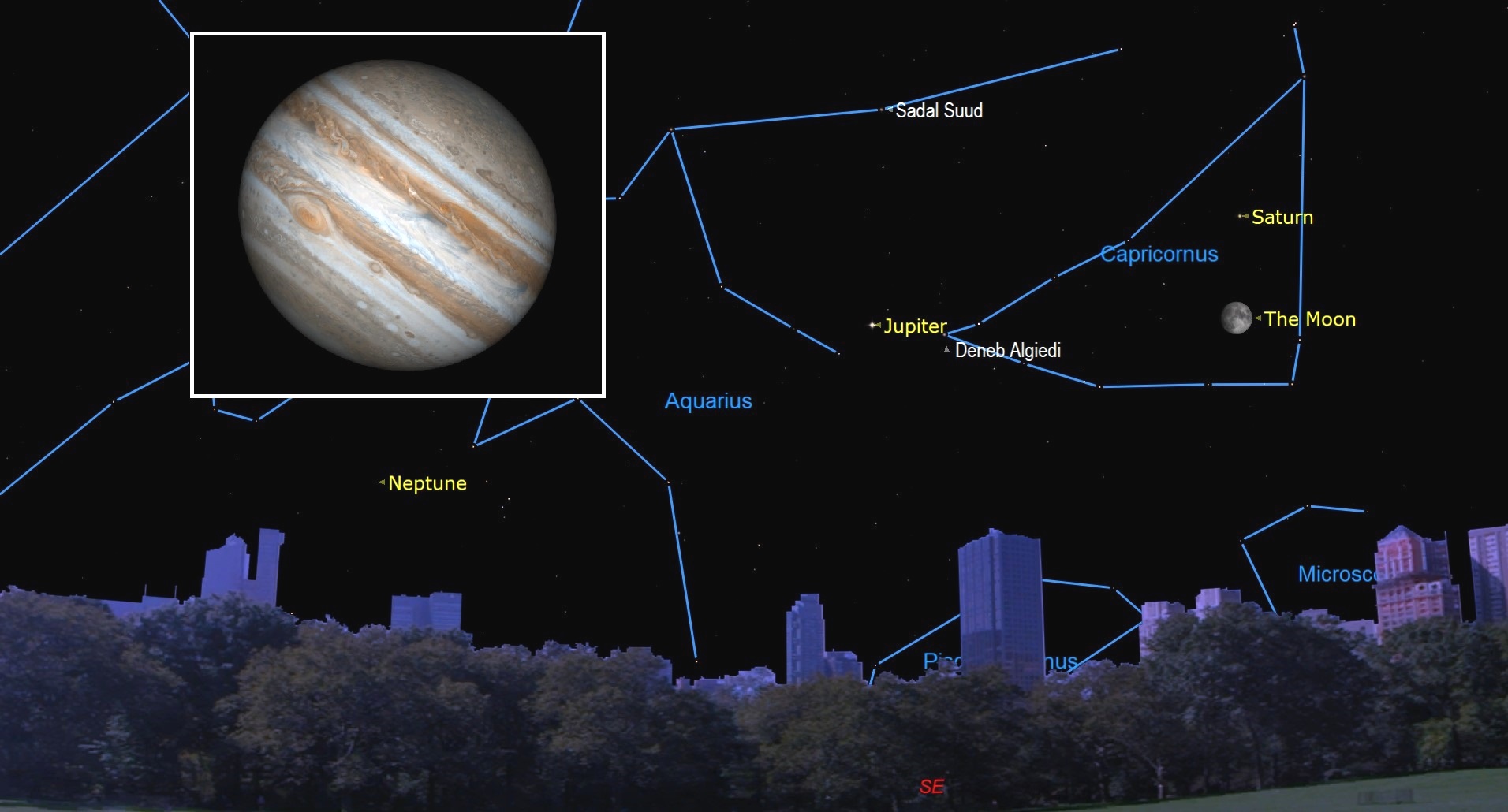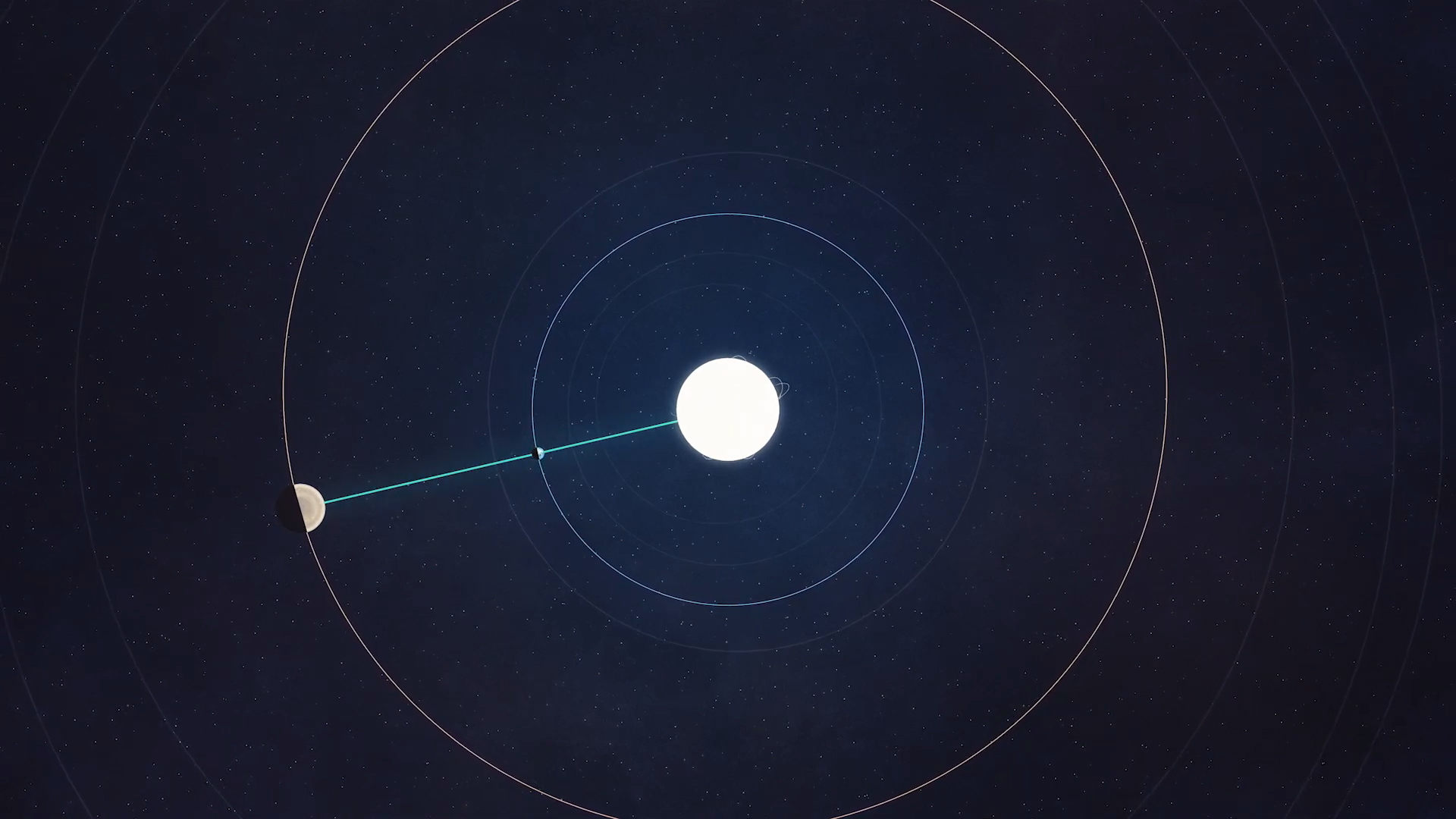Jupiter is at its biggest and brightest this week
Spotting Jupiter is a breeze this week for the naked eye as it reaches its biggest and brightest moment in the night sky. Telescope-hunters will also get a treat looking for moons and atmospheric bands.
The gas giant planet will be at opposition today (Aug. 19), meaning it is directly opposite the sun in Earth's sky. Jupiter also makes its closest approach of the year to Earth during opposition. The planet will appear at magnitude -2.9, well within naked-eye range and outshining any star in Earth's sky except, of course, for the sun.
"August is perhaps the best time this year to enjoy viewing Jupiter and Saturn, as both planets reach opposition this month," NASA noted. The two planets are also near each other in the sky, and we have directions below on where to find them.
Related: Best telescopes 2021: Top picks for beginners & viewing planets
More: Best night sky events of August 2021 (stargazing maps)
Jupiter will be especially easy to spot this year at opposition because it is near the full moon, according to EarthSky. If you look to the southeast, Jupiter lies directly above the moon on Saturday (Aug. 21.) Incidentally, August's full moon is called a "Blue Moon" due to an obscure scheduling rule that has nothing to do with color.
To spot Jupiter, look to the left of the full moon (or right, if you're using a telescope that inverts your image). You should see two bright dots a few degrees apart, along the ecliptic or the path of the planets and moons in our sky. Saturn will be just to the left of the moon, while Jupiter will be even further to the left.
All week you can also use the full moon to spot not only Jupiter and Saturn, but also Pluto and Neptune. Pluto will be very faint (only visible in a moderate-sized telescope), but directly above the moon on Aug. 19. Neptune will also be faint and extremely low in the southeast sky, but if you know where to look, Neptune will be to the left of the moon on Aug. 22 and you may just glimpse it in a telescope.
Breaking space news, the latest updates on rocket launches, skywatching events and more!
Jupiter will remain highly visible in the constellation Capricornus in the coming weeks, even after the moon passes through the region. To find the arrowhead-shaped constellation, look for the Summer Triangle asterism and make a line from Vega through Altair to the lower southern sky.
If you happen to have a telescope, Sky & Telescope recommended looking for the four largest Jovian or "Galilean" moons — Callisto, Europa, Io and Ganymede — on the evening of Aug. 24 to 25, when the moons are arrayed on either side of Jupiter. But anytime this month is great to spot moons (including their shadows on Jupiter) or to look at the bands of the huge planet, the magazine added.
"Small telescopes will clearly show all the Galilean ducklings and their meanders around mother hen Jupiter," Sky & Telescope explained. "Slightly larger instruments, in the 4- to 6-inch range, will reveal the shadows the moons cast when they transit in front of the planet, as well as their disappearance and reappearance at the limb before and after they're occulted by Jupiter. Ganymede, the largest moon, casts the inkiest, easiest-to-see shadow, while Europa, the smallest, takes more concentration."
Editor's note: If you snap an amazing photo of Jupiter at opposition and would like to it them for a story or photo gallery, send images and comments to spacephotos@space.com!
Follow Elizabeth Howell on Twitter @howellspace. Follow us on Twitter @Spacedotcom and on Facebook.

Elizabeth Howell (she/her), Ph.D., was a staff writer in the spaceflight channel between 2022 and 2024 specializing in Canadian space news. She was contributing writer for Space.com for 10 years from 2012 to 2024. Elizabeth's reporting includes multiple exclusives with the White House, leading world coverage about a lost-and-found space tomato on the International Space Station, witnessing five human spaceflight launches on two continents, flying parabolic, working inside a spacesuit, and participating in a simulated Mars mission. Her latest book, "Why Am I Taller?" (ECW Press, 2022) is co-written with astronaut Dave Williams.



